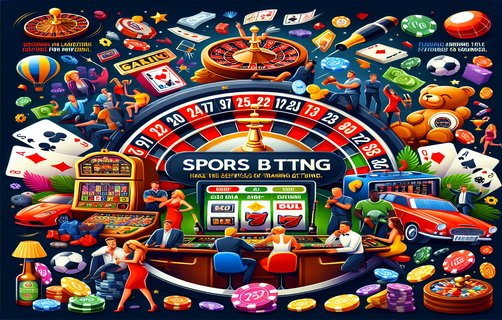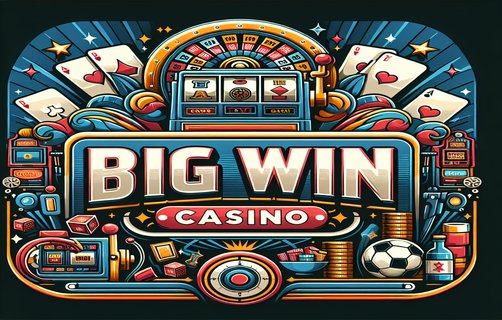Strategic Elements in Card Game Design
कार्ड खेलों में रणनीतिक तत्व

Card games have evolved significantly from traditional deck-based games to innovative modern designs that incorporate various mechanics and strategic elements. Among these, the modular map sections, action point allocation, navigation systems, action limits, luck probability, and score tracking systems are critical components that dictate gameplay experiences and strategies.

Modular map sections introduce flexibility and adaptability to game environments. Instead of a static board, players can create or alter the game board dynamically, enhancing replayability and creative strategies. Each session becomes unique, challenging players to devise new tactics as they navigate different layouts. This shifting landscape can significantly impact decision-making, as players must consider how spatial arrangements affect potential moves.
Action point allocation is another key feature that influences player strategy. By designating a specific number of actions each turn, designers can balance gameplay and encourage players to think critically about resource management. This mechanic fosters a strategic depth where players must choose wisely among available options, enhancing the engagement level. Limiting the number of actions available per turn creates tension and excitement, challenging players’ long-term planning while keeping the gameplay dynamic.
Navigators in card games often serve as essential tools that guide players through the complexities of game mechanics. Whether they are digital interfaces or physical tokens, navigators help simplify rule comprehension and facilitate quicker play decisions. Effective navigators can lower the barrier to entry for new players, making complex strategies more accessible while maintaining the thrill for veteran players seeking deeper tactical layers.
Incorporating action limits ensures a balance between player agency and game pacing. Carefully designed limits can prevent over-saturation of actions, thereby ensuring that every move feels impactful. The rhythm of the game must be managed to retain excitement; too many actions could overwhelm players or dilute strategies. This controlled pacing fosters a gameplay experience where every decision leaves an imprint on the outcome.
Luck probability remains an essential aspect of many card games, introducing unpredictability and excitement. However, the balance between skill and chance is crucial. Designers often strive to offer players opportunities to mitigate luck through strategic choices, allowing for a deeper sense of agency. This aspect of probability can enhance drama and engagement, as players must navigate both skill and luck in pursuit of victory.
Finally, an effective score tracker is vital for maintaining player engagement and motivation. It not only keeps track of players’ progress but also enhances competitive spirit by visually displaying achievements. A clear and well-designed scoring system can motivate players to improve their strategies while fostering an atmosphere of friendly competition.
In conclusion, the intricacies of card game design lie within these interconnected elements: modular map sections, action point allocation, navigational aids, action limits, luck probability, and score tracking. Each contributes to a multifaceted experience that appeals to both casual and strategic players, creating a dynamic environment that challenges the intellect and entertains in equal measure.
कार्ड खेल पारंपरिक डेक-आधारित खेलों से विकसित होकर विभिन्न यांत्रिकी और रणनीतिक तत्वों को शामिल करने वाले आधुनिक डिज़ाइनों में शामिल हो गए हैं। इनमें, मॉड्यूलर मानचित्र खंड, क्रिया बिंदु आवंटन, नेविगेशन सिस्टम, क्रिया सीमाएं, भाग्य की संभावना और स्कोर ट्रैकिंग सिस्टम महत्वपूर्ण घटक हैं जो गेमप्ले अनुभव और रणनीतियों को निर्धारित करते हैं।
मॉड्यूलर मानचित्र खंड गेम वातावरण में लचीलापन और अनुकूलन को पेश करते हैं। एक स्थिर बोर्ड के बजाय, खिलाड़ी गेम बोर्ड को गतिशील रूप से बना या बदल सकते हैं, जिससे पुनः खेल की संभावना और रचनात्मक रणनीतियों में वृद्धि होती है। प्रत्येक सत्र अद्वितीय हो जाता है, खिलाड़ियों को विभिन्न लेआउट को नेविगेट करते समय नई योजनाएँ तैयार करने के लिए चुनौती दी जाती है। यह बदलता परिदृश्य निर्णय लेने पर महत्वपूर्ण प्रभाव डाल सकता है, क्योंकि खिलाड़ियों को संभावित चालों पर स्पैटियल अरेन्जमेंट का विचार करना होता है।
क्रिया बिंदु आवंटन एक और प्रमुख विशेषता है जो खिलाड़ी की रणनीति को प्रभावित करती है। प्रत्येक टर्न में विशिष्ट संख्या में क्रियाओं को संदर्भित करके, डिजाइनर्स गेमप्ले को संतुलित कर सकते हैं और खिलाड़ियों को संसाधन प्रबंधन के बारे में गहराई से सोचने के लिए प्रोत्साहित कर सकते हैं। यह मैकेनिक्स एक रणनीतिक गहराई को बढ़ावा देता है जहां खिलाड़ियों को उपलब्ध विकल्पों के बीच बुद्धिमान चयन करने के लिए मजबूर किया जाता है, जिससे सगाई की स्तर बढ़ती है। प्रति टर्न उपलब्ध क्रियाओं की संख्या को सीमित करना तनाव और उत्साह पैदा करता है, खिलाड़ियों की दीर्घकालिक योजना को चुनौती देता है जबकि गेमप्ले को गतिशील रखता है।
कार्ड खेलों में नेविगेटर्स अक्सर महत्वपूर्ण उपकरण होते हैं जो खिलाड़ियों को गेम मैकेनिक्स की जटिलताओं के माध्यम से मार्गदर्शन करते हैं। चाहे वे डिजिटल इंटरफेस हों या भौतिक टोकन, नेविगेटर्स नियमों की समझ को सरल बनाने और त्वरित खेल निर्णयों को सुविधाजनक बनाने में मदद करते हैं। प्रभावी नेविगेटर्स नए खिलाड़ियों के लिए प्रवेश बाधा को कम कर सकते हैं, जटिल रणनीतियों को अधिक सुलभ बनाते हुए पेशेवर खिलाड़ियों के लिए गहरे सामरिक स्तरों को बनाए रखते हैं।
क्रिया सीमाओं का समावेश खिलाड़ी एजेंसी और गेम गति के बीच संतुलन सुनिश्चित करता है। सावधानी से डिजाइन की गई सीमाएँ क्रियाओं के अधिभार को रोक सकती हैं, यह सुनिश्चित करते हुए कि प्रत्येक चाल का एक प्रभावव्यापक प्रभाव होता है। खेल की लय का प्रबंधन करना उत्साह बनाए रखने के लिए आवश्यक है; बहुत अधिक क्रियाओं से खिलाड़ियों को अभिभूत किया जा सकता है या रणनीतियाँ फैल सकती हैं। यह नियंत्रित गति एक गेमप्ले अनुभव को बढ़ावा देती है जहां प्रत्येक निर्णय परिणाम पर एक छाप छोड़ता है।
भाग्य की संभावना कई कार्ड खेलों का एक आवश्यक पहलू है, अप्रत्याशितता और उत्साह का परिचय देती है। हालाँकि, कौशल और भाग्य के बीच संतुलन महत्वपूर्ण है। डिजाइनर अक्सर भाग्य को कम करने के लिए खिलाड़ियों को रणनीतिक विकल्प प्रदान करने का प्रयास करते हैं, जिससे एक गहरे एजेंसी का अनुभव मिलता है। यह संभावना का पहलू नाटक और संलग्नता को बढ़ा सकता है, क्योंकि खिलाड़ियों को जीत के लिए कौशल और भाग्य दोनों के माध्यम से नेविगेट करना पड़ता है।
अंततः, एक प्रभावी स्कोर ट्रैकर खिलाड़ियों की भागीदारी और प्रेरणा को बनाए रखने के लिए महत्वपूर्ण है। यह न केवल खिलाड़ियों की प्रगति पर नज़र रखता है बल्कि उपलब्धियों को दृश्य रूप से प्रदर्शित करके प्रतिस्पर्धात्मक भावना को बढ़ाता है। एक स्पष्ट और अच्छी तरह से डिज़ाइन किए गए स्कोरिंग सिस्टम से खिलाड़ियों को अपनी रणनीतियों में सुधार करने के लिए प्रेरित किया जा सकता है जबकि अनुकूल प्रतिस्पर्धा का वातावरण उत्पन्न होता है।
निष्कर्ष में, कार्ड खेल डिजाइन की जटिलता इन आपस में जुड़े तत्वों में निहित है: मॉड्यूलर मानचित्र खंड, क्रिया बिंदु आवंटन, नेविगेशनल एड्स, क्रिया सीमाएँ, भाग्य की संभावना, और स्कोर ट्रैकिंग। प्रत्येक का योगदान बहुआयामी अनुभव में होता है जो आकस्मिक और रणनीतिक खिलाड़ियों दोनों को प्रोत्साहित करता है, एक गतिशील वातावरण बनाते हुए जो बौद्धिक चुनौतियों को और मनोरंजन के साथ संतुलित करता है।

comments
CardMaster99
This article really encapsulates the core mechanics of card game design. Love the insights on modular maps!
Strategist777
Great breakdown of action point allocation! It’s fascinating how small changes can impact gameplay.
LuckGambler
Interesting take on luck probability. It's always a fine line between skill and chance in games.
MapBuilder
Modular maps sound like a fantastic way to increase replayability! Can't wait to try this in my next game.
ScoreTrackerPro
Score tracking is such an underappreciated aspect of game design. Keeping players engaged is crucial!